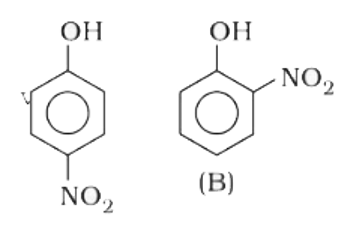Evaporation is the change of state from liquid to vapour by absorbing heat at a particular temperature.
Step-by-Step Solution:
1. Definition of Evaporation:
- Evaporation is the process where a liquid changes into a vapor or gas. This occurs when molecules at the surface of the liquid gain enough energy to overcome intermolecular forces and escape into the air.
2. Temperature Consideration:
- Unlike boiling, which occurs at a specific temperature (the boiling point), evaporation can happen at any temperature. This means that even at temperatures below the boiling point, liquid can still turn into vapor.
3. Heat Absorption:
- During evaporation, the liquid absorbs heat from its surroundings. This heat energy is used to increase the kinetic energy of the molecules, allowing some of them to break free from the liquid state.
4. Closed Container Effect:
- If the liquid is placed in a closed container, the vapor produced cannot escape. As a result, the water level remains constant because the vapor molecules are in equilibrium with the liquid molecules. This means that the rate of evaporation equals the rate of condensation.
5. Conclusion:
- Therefore, evaporation is a gradual process that can occur at any temperature below the boiling point, and it involves the absorption of heat. In a closed system, the liquid level does not change due to the balance between evaporation and condensation.
- Evaporation is the process where a liquid changes into a vapor or gas. This occurs when molecules at the surface of the liquid gain enough energy to overcome intermolecular forces and escape into the air.
- Unlike boiling, which occurs at a specific temperature (the boiling point), evaporation can happen at any temperature. This means that even at temperatures below the boiling point, liquid can still turn into vapor.
- During evaporation, the liquid absorbs heat from its surroundings. This heat energy is used to increase the kinetic energy of the molecules, allowing some of them to break free from the liquid state.
- If the liquid is placed in a closed container, the vapor produced cannot escape. As a result, the water level remains constant because the vapor molecules are in equilibrium with the liquid molecules. This means that the rate of evaporation equals the rate of condensation.
- Therefore, evaporation is a gradual process that can occur at any temperature below the boiling point, and it involves the absorption of heat. In a closed system, the liquid level does not change due to the balance between evaporation and condensation.
Similar Questions
The rapid change of state from liquid to vapour at a particular temperature
View SolutionThe change of state from liquid to solid by the release of heat ………..
View SolutionCondensation refers to the change of state from liquid to gas on cooling.
View SolutionWhich process refers to the change of state from liquid to solid?
View SolutionThe change of state from liquid to gas that takes place at the surface of a liquid
View SolutionExplain the change of state from solid to liquid on the basis of kinetic theory.
View SolutionOut of the compounds below, the vapour pressure of (B) at a particular temperature is

View SolutionName the following
Change of state from vapour to liquid .
View Solution
A solid material is supplied with heat at a constant rate. The temperature of the material is changing with heat input as shown
(i) AB: change of state from solid to liquid.
CD: change of state from liquid to vapour
(ii) When CD=2AB, i.e., latent heat of vapourization is twice the latent heat of fusion of the substance.
(iii) The reciprocal of slope of DE represents the heat capacity of vapour state of substance .
(iv) If slope of OA>slope of BC, i.e., specific heat of liquid state is greater than specific heat that of solid state.
View SolutionObserve the graph given below and answer the following questions:

During vaporization of a liquid, certain amount of heat is absorbed without any change in temperature. Which part of the graph shows this change?
View Solution
